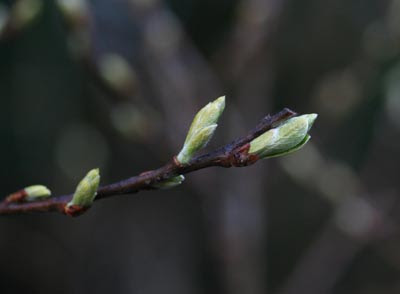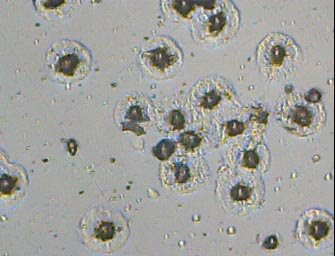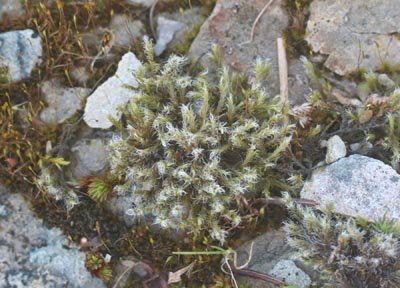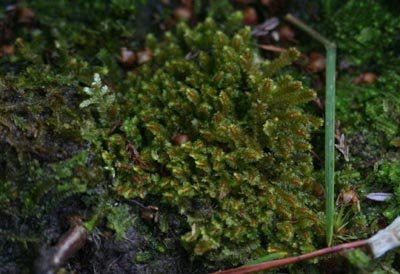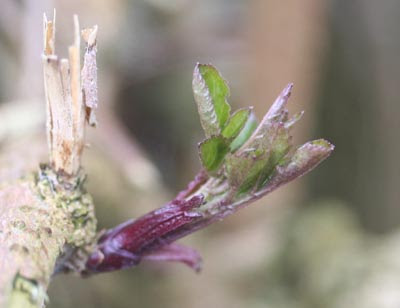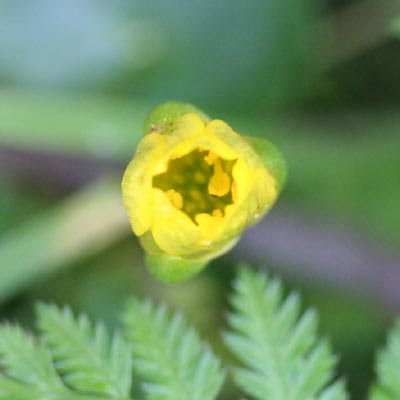Original Hedgerow, leg 1, whilst on a film shoot. One of the things I have to do when on these shoots is 'pretend to be taking a photograph'. What better way to pretend than actually taking shots?
This first shot - on a wall - shows a lichen
(Cladonia pyxidata, pale green, centre with pink, embryonic fruitbodies), at least three mosses:
Bryum capillare (olive-brown rosettes dotted around the image),
Homalothecium sericium (silver-tipped shoot, left of centre), and an unidentified specimen with curled leaves (right edge).

This shot shows the liverwort
Lunularia cruciata, with its diagnostic moon-shaped gemmae cups, with gemmae (little bundles of cells that develop into new specimens) spilling out.

This could potentially be a very confusing shot. The central 'specimen' is in fact two mosses. The pale grey cushion in the foreground is
Grimmia pulvinata, and the capsules and setae at the rear belong to a specimen of
Tortula muralis, which is hidden behind the Grimmia
.

This is a moss:
Plagiothecium undulatum. I find it very reminiscent of a minute fern.

This moss forms 'boots' around all the trees and bushes around here:
Hypnum cupressiforme.
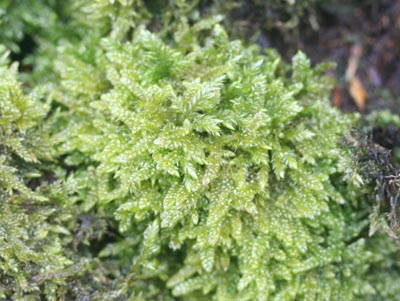
It was raining, so I got a couple of water-droplet-shots. The large droplet to the left is on the capsule of
Bryum capillare, and the smaller droplet to the right is on
Tortula muralis.

Here's the Bryum capsule in closeup:



